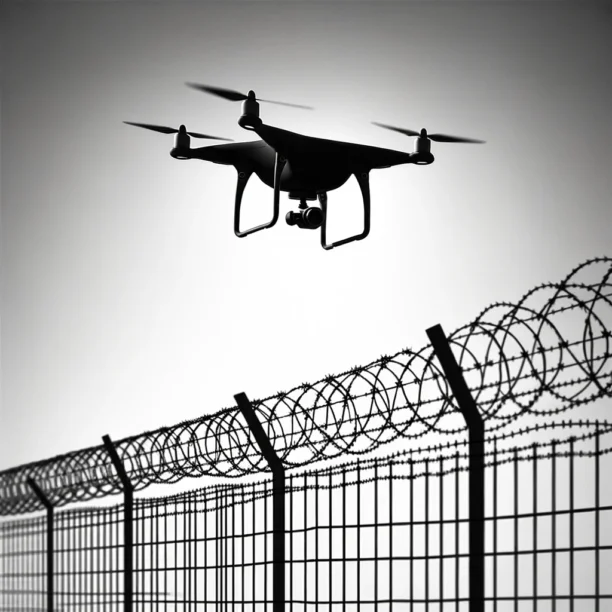State officials and experts emphasize the need for stronger counter-drone legislation to combat rising drone incursions in prisons and elsewhere.
Georgia’s Department of Corrections is grappling with a significant challenge as drones increasingly smuggle contraband into state prisons. This growing issue came into sharp focus following a recent incident at Smith State Prison, where a drone allegedly delivered the firearm used in a tragic murder-suicide on June 16.
As reported by the Georgia Recorder, Department of Corrections Director Tyrone Oliver testified before the Georgia Senate’s Department of Corrections Facilities Study Committee, revealing that ongoing investigations suggest a drone was used to deliver the gun that inmate Jaydrekus Hart used to kill Aramark employee Aureon Grace. Hart, who was serving a 20-year sentence for voluntary manslaughter, then turned the weapon on himself.
The incident is part of a broader problem of drones being used to deliver illegal items such as drugs and cell phones into Georgia’s state prisons, exacerbating violence within these facilities and endangering both inmates and staff.
“It’s just a constant battle that we’re fighting,” Oliver said. “Most of the inmates now, they’re not trying to compromise with the as many staff as possible because they say they can get anything they want via the sky or via drone.”
Legislative Action on Counter-UAS Technology
The increasing use of drones to smuggle contraband into prisons underscores the limitations of current counter-UAS (Unmanned Aircraft Systems) technology and the urgent need for enhanced legislative authority. Currently, although local law enforcement are among the first called to deal with drone incursions, they have few tools to help. Under current law, counter UAS technology may only be used by a few federal agencies.
DJ Smith, UAS and CUAS Program Coordinator for the Virginia State Police, is a frequent speaker on the topic and a recognized expert on drones and counter drone technology. Smith expressed frustration with the existing legal framework. “The overdue legislative carve-outs for SLTT [State, Local, Tribal and Territorial law enforcement] to conduct advanced detection methods, such as decoding drone signals to identify the pilot’s location & flight path, would be incredibly valuable,” Smith said. “This would allow us to find the pilot and educate or take appropriate action against violators, whether through regulatory measures or enforcement.”
At the recent Georgia Public Safety Summit hosted by DRONERESPONDERS, Smith hosted a panel of experts to discuss the challenges that state and local law enforcement agencies face in detecting and mitigating unauthorized drone activity.
Mary Rupert from the Department of Homeland Security’s c-UAS Program Office noted that while federal agencies such as the Secret Service, Customs and Border Protection, and the United States Coast Guard currently have counter-UAS operational capabilities, there are significant gaps in legislation. She stated, “We can’t be everywhere,” and emphasized the need for expanded authority to effectively manage drone threats.
Chris Sadler of the VIPC Public Safety Innovation Center highlighted Virginia’s efforts to address the issue, including the use of a Dedrone trailer to monitor unauthorized drone activity over critical infrastructure. However, Sadler stressed that these efforts are still in their early stages, and there is a pressing need for broader authority and more robust technology.
A Call for Comprehensive Solutions
The need for legislative action to expand counter-UAS authority for state and local law enforcement agencies is becoming increasingly urgent. As drone technology continues to evolve rapidly, the challenges associated with detecting and mitigating unauthorized drone activity are expected to grow.
The implementation of advanced counter-UAS technology and the expansion of legal authority for its use by state and local agencies are critical steps in the ongoing effort to secure prison facilities, critical infrastructure, and more.
Read more:
Miriam McNabb is the Editor-in-Chief of DRONELIFE and CEO of JobForDrones, a professional drone services marketplace, and a fascinated observer of the emerging drone industry and the regulatory environment for drones. Miriam has penned over 3,000 articles focused on the commercial drone space and is an international speaker and recognized figure in the industry. Miriam has a degree from the University of Chicago and over 20 years of experience in high tech sales and marketing for new technologies.
For drone industry consulting or writing, Email Miriam.
TWITTER:@spaldingbarker
Subscribe to DroneLife here.
